All about Thai Ridgebacks
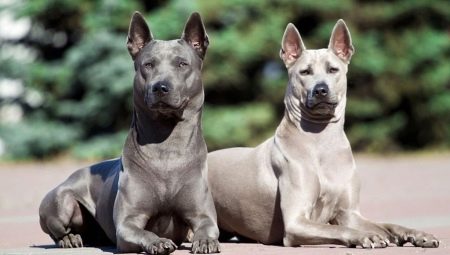
Among fighting dogs, such an amazing breed as the Thai Ridgeback stands out. These dogs are unusually intelligent, wayward and hardy, and are also ideally suited to keeping in an ordinary apartment. In this article, you will learn all the most interesting about Thai Ridgebacks.
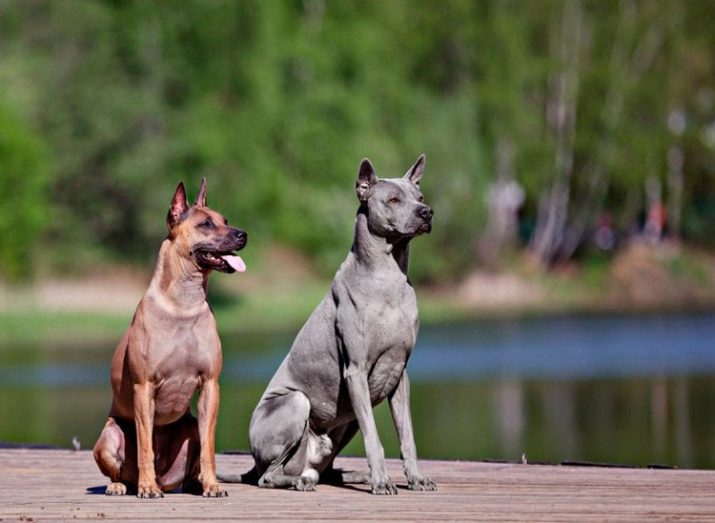
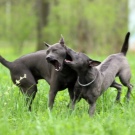
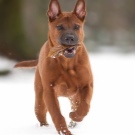


Characteristics of the breed
Thai Ridgebacks are large dog breeds. Due to the isolation of their historical homeland (Thailand) and the impossibility of breeding experiments with other breeds they were able to successfully gain a foothold as an individual breed and acquire a number of characteristic features.
- Males are usually slightly taller and more massive than females - from 56 to 61 centimeters at the withers, females - from 51 to 56 centimeters. In the case of these dogs, the ratio of height to length is slightly out of proportion - 10: 11.
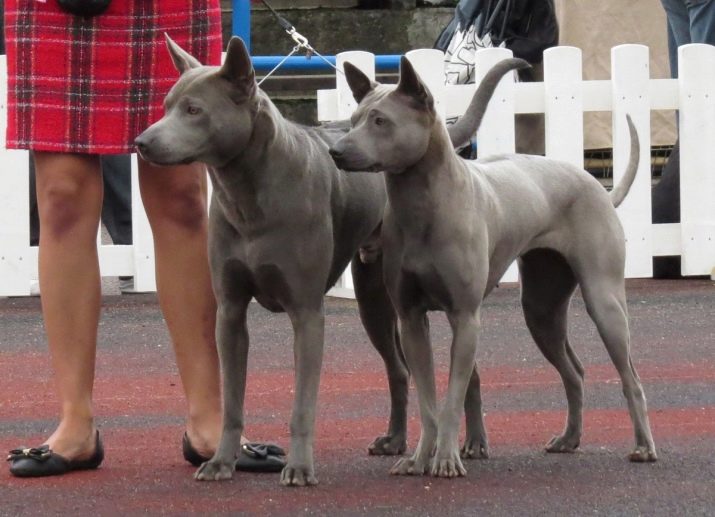
- Dog weight depending on age and height, it may differ, however, females are usually not heavier than 25 kg, and males can reach 35 or more kilograms.
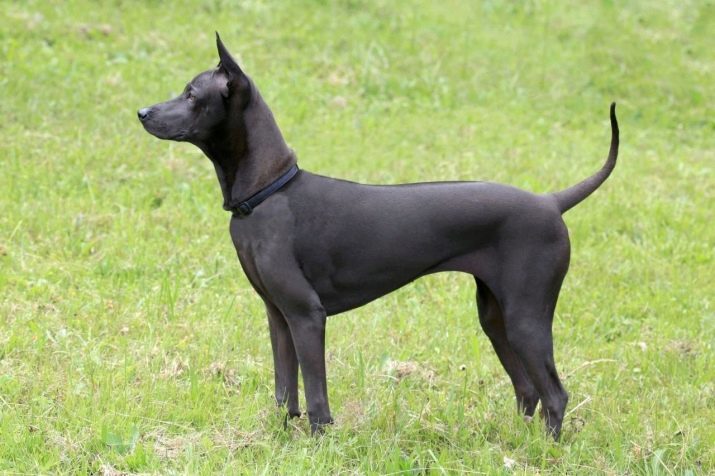
- Like most domesticated dog breeds, Thai Ridgebacks live on average up to 13 years... If the conditions of detention are favorable, like the pedigree of the individual, then the life expectancy of the pet will increase to 15-17 years.

- Round skullflat in the occipital region. The shape of the head like that of a Thai is sometimes called a wolf. The entire head and muzzle are covered with a thin layer of thick fur, and characteristic folds of skin are noticeable on the head, under the muzzle and on the forehead.
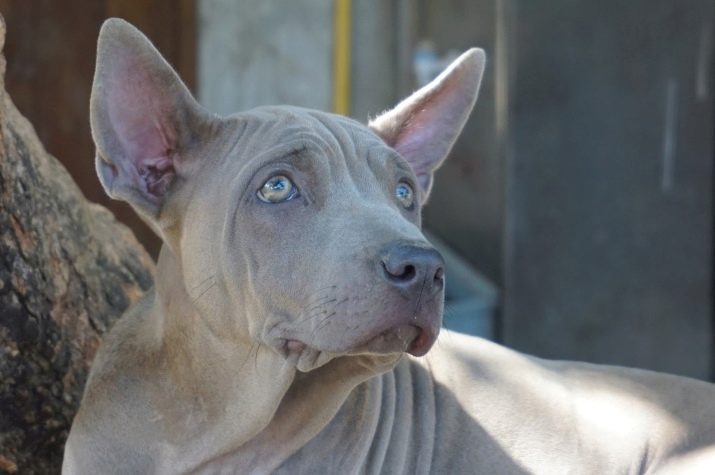
- The muzzle has a standard wedge shape, slightly less than the distance from the line of the eyes to the occiput in length. The stop is clearly visible. The nose is well developed (black or grayish-blue), large nostrils.The cheeks are flat in shape, against their background, the cheekbones protrude strongly.
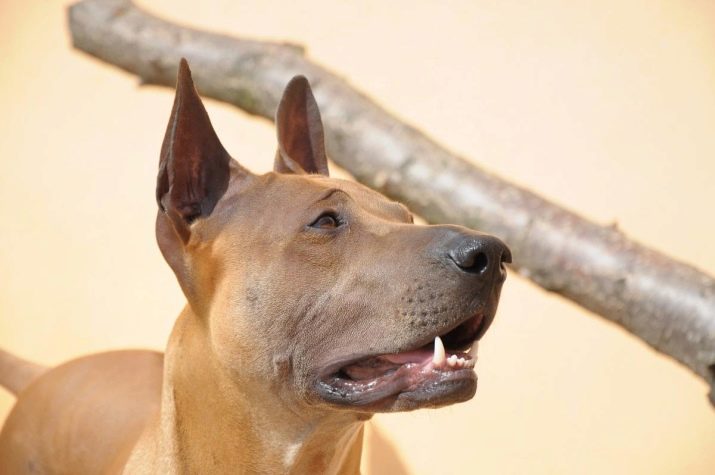
- The lips fit snugly against the jaw, all teeth, including canines, are hidden in the oral cavity. The jaws are incredibly powerful and have a scissor bite. The teeth are tightly packed, do not stand out against the general background. The tongue is usually dark in color or red or pinkish with black spots.
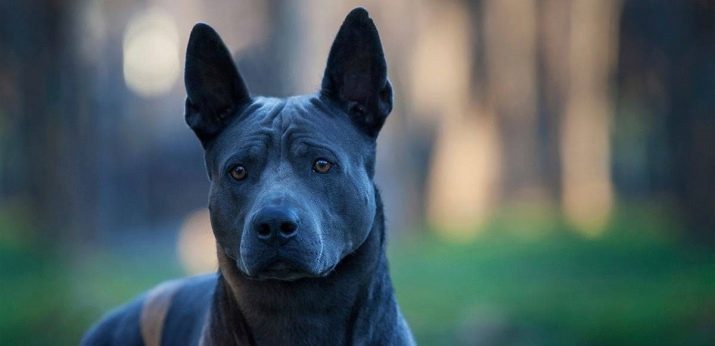
- Pointed ears, elongated triangular in shape and small in size. Set at a great distance from each other - on the sides of the round skull. In pedigree individuals, they always stand up, with the front part (auricles) looking forward, a slight forward tilt is noticeable.
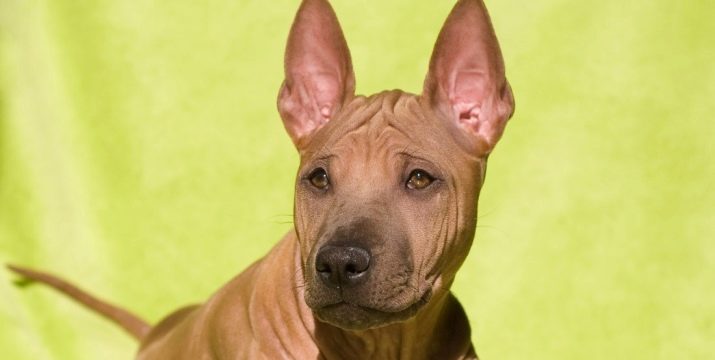
Unlike some other breeds of dogs, it is forbidden to stop them from individuals of this breed.
- Eyes are large enough and almond-shaped, always set deep, the eyelids are thin, dark and close to the eyes. Eye color is predominantly brown or dark brown (with preference given to individuals with a more saturated iris). Depending on the color, the requirements of the standard for eye color may differ, for example, in individuals of blue, a lighter, honey or sandy iris is acceptable.
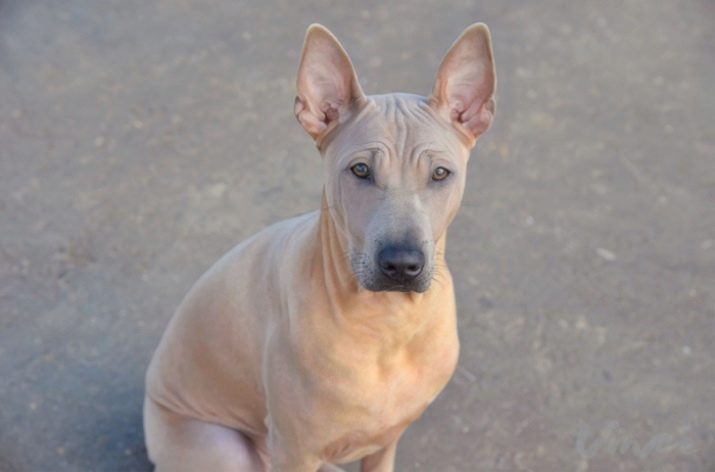
- The neck is not particularly longbut powerful, thick and flexible. Bending is practically absent, as is the suspension. Individuals of this breed are characterized by skin folds on the face and neck. Strong muscles can be felt through the thick skin.
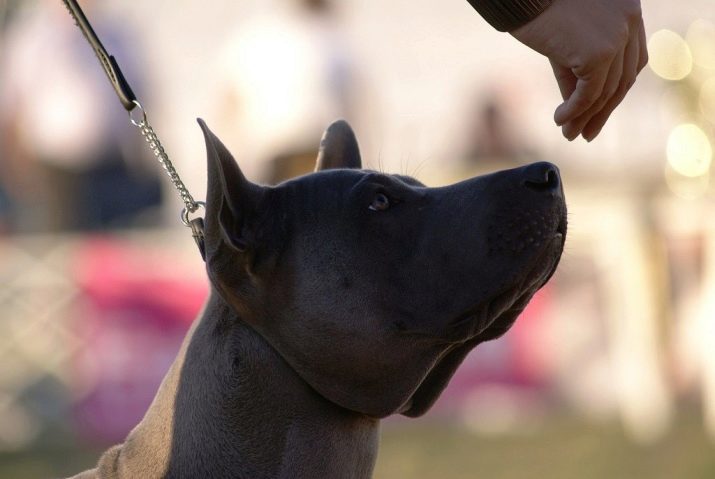
- The body is slightly elongated, but harmonious. The back is straight, the loin is straight, the croup has a smooth oblique shape. The ribs are slightly elongated and rounded, forming a well-developed rib cage. The skin adheres tightly to the entire body, without forming folds on the abdomen or chest, the groin and abdomen are tucked up.
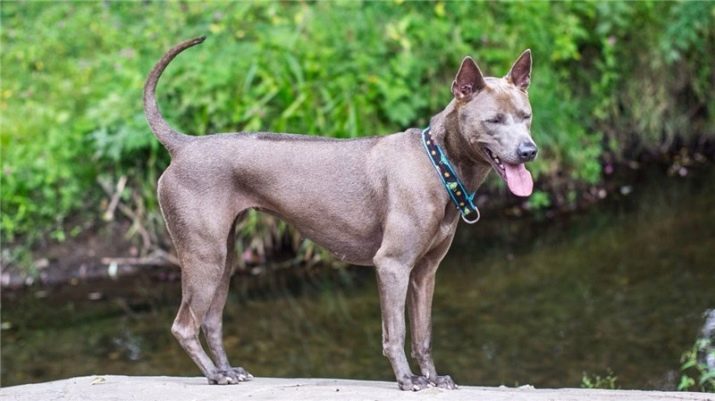
- The tail is long enough, tapered from base to tip. Smooth, covered with an even layer of fine wool. In a resting state, it is either erect or crescent-shaped. Cupping is prohibited.
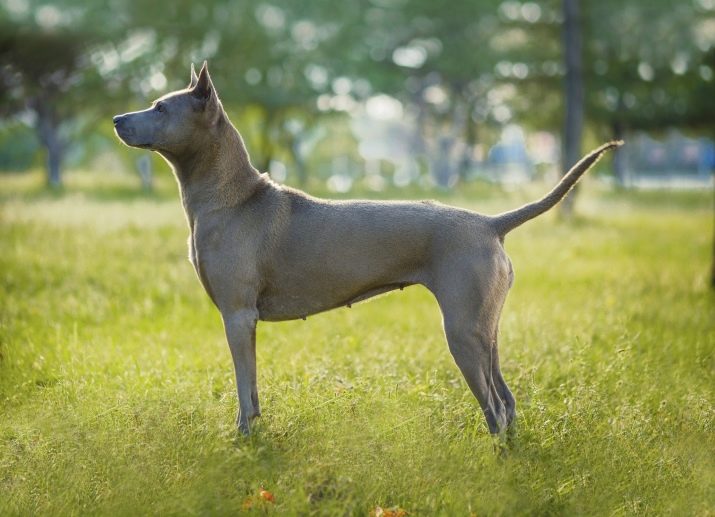
- The limbs are not particularly long, but very powerful and straight, the shoulder muscles are remarkably developed, while the humerus and shoulder blades are directed precisely backward. The hind legs are distinguished by powerful muscular thighs and rounded knees (a feature of the breed - the knees are located rather low). Metatarsus are exceptionally straight. The paws themselves are tightly assembled, their shape is most often oval. The pads are dark and hard, which allows the dog to be active for a long time. The claws are rather large, they can be either dark or light in color.
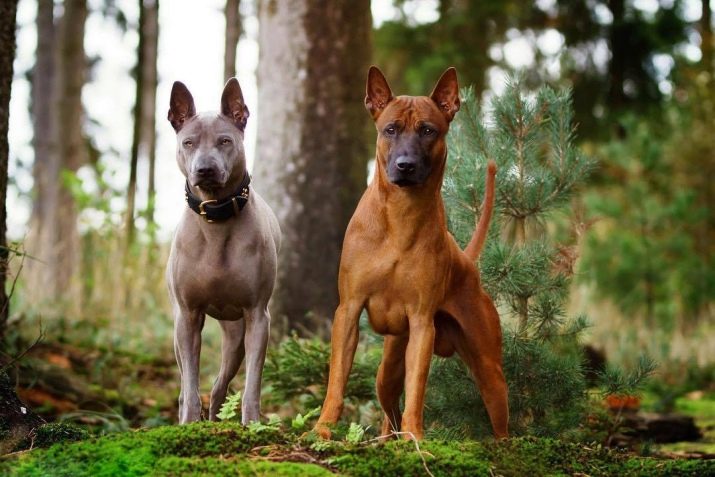
- Thais are exceptional aesthetes when it comes to jogging and walking. Their movements are clearly verified, they have their own rhythm. Each step of these dogs is consistent, there is no irregular spread of paws, which allows them to develop tremendous speed due to tremendous pushing force.
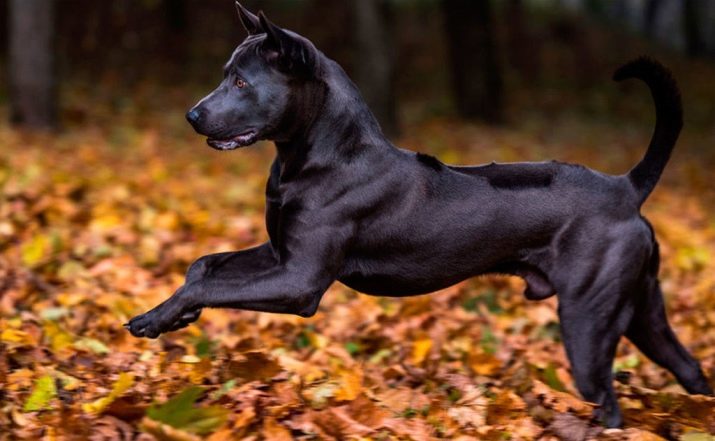
With all this orderliness, the movements of the Thai Ridgebacks are graceful, smooth and spontaneous.
- This dog breed is exceptionally short-haired., while the structure of the wool is soft and docile. These dogs have practically no undercoat, which is why it is impossible to keep them outside.
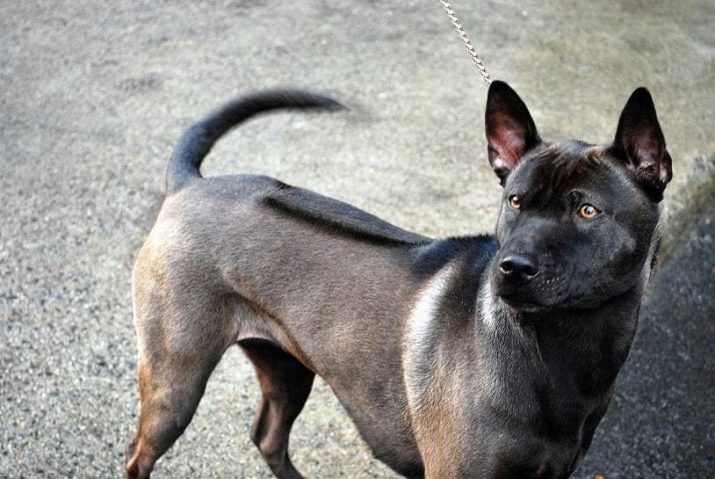
The Thais have several types of wool, a description of each of them will be briefly given below. At the moment, there is no exact standard regarding the length of the coat, and therefore the data in different sources on this matter may differ.
- Standard. The longest-haired option is wool from 1 to 2 centimeters. It is considered more suitable for individuals living in the northern regions. Protects from the sun, cold, insects and other adverse external conditions.
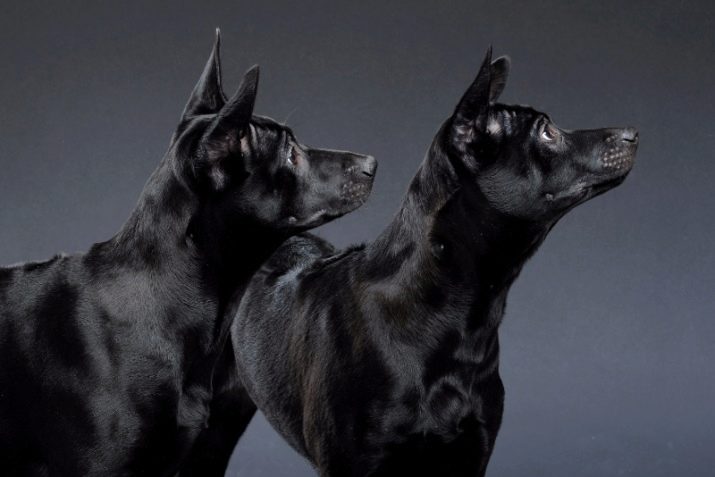
- Short. The most common variety. Hair up to 1.2 centimeters in length. This option is considered intermediate among the others.
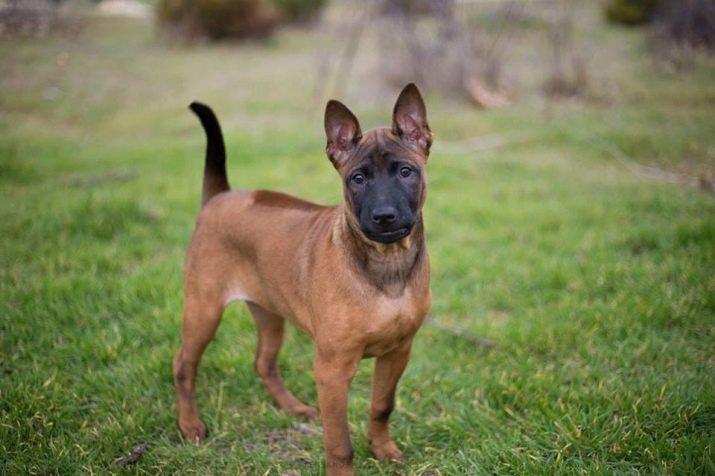
- Velvet (or "velor"). In this case, the hairline is exceptionally soft and silky, perfectly retains heat, protects from frost. The average length is from 0.5 to 0.9 centimeters.
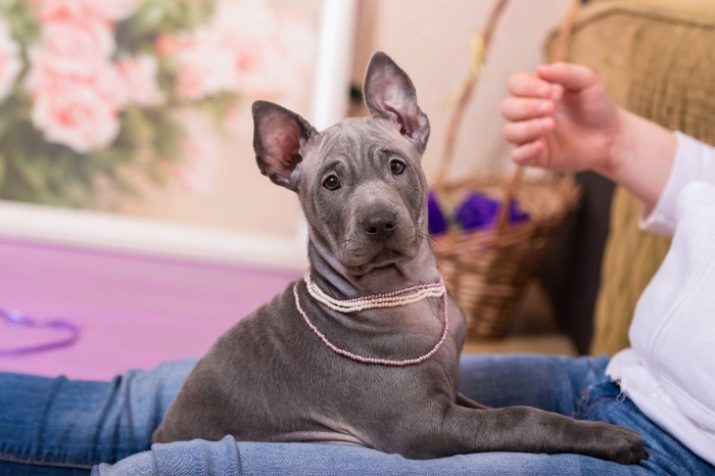
- Super short velor. This version of the wool cover is considered the most unpresentable because of its appearance. From a distant distance, such dogs seem to be practically bald, which becomes more noticeable in individuals with a light coat color. Moreover, such a short coat (from 1 to 3 millimeters) does not protect the pet from either the cold or the same insects and the sun.
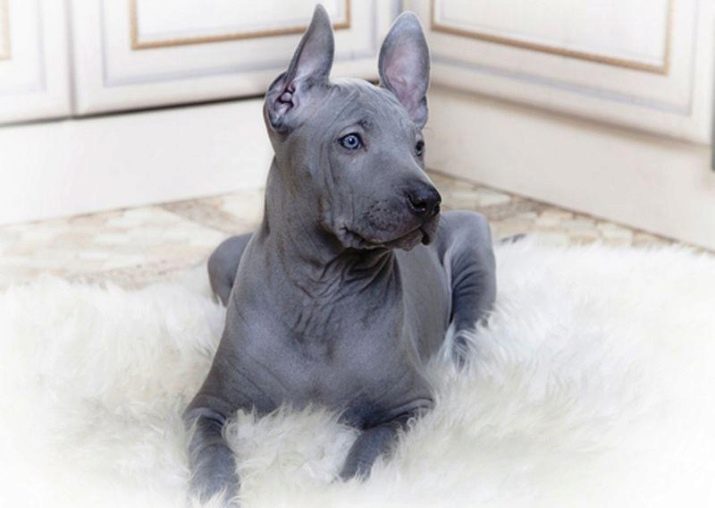
Thai Ridgebacks also have their own individual trait, by the presence of which this breed can be distinguished from the rest. This is the so-called comb on the back, which is formed from a specific hair growth. The comb can be of many different shapes, but the most common ones are in the form of a needle, guitar, pin, feather, saddle, and arrow.

This ridge also has its own requirements in the standard - it should be located exactly on the back of the dog and not go over the sides. On the comb, the formation of curls at the ends of the hair is also permissible.
Color
The ICF standard allows as many as 4 colors in individuals of the Thai Ridgeback.
- Red. It is considered one of the most common. Usually found in the following variations: burgundy, brown, dark red, cherry. There are no transitions in this case, however, slightly lighter areas on the hips and abdomen are acceptable. This also includes individuals of a rich red color. This color is characterized by glossy overflows.
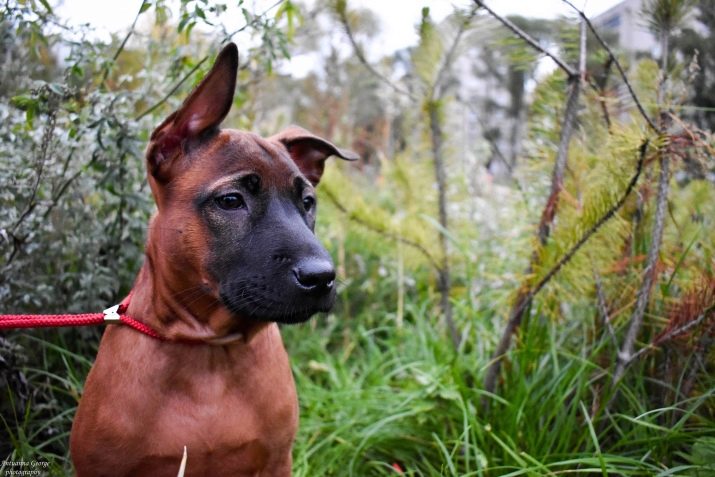
- Black. Most often, these are individuals of exactly black color, but with a different color sheen. There are both brown tints and lighter ones - brown or olive. The main condition for such a color is that it is evenly distributed over the entire body of the individual. This color is not considered popular, because when mating it suppresses the possibility of a different color in puppies.
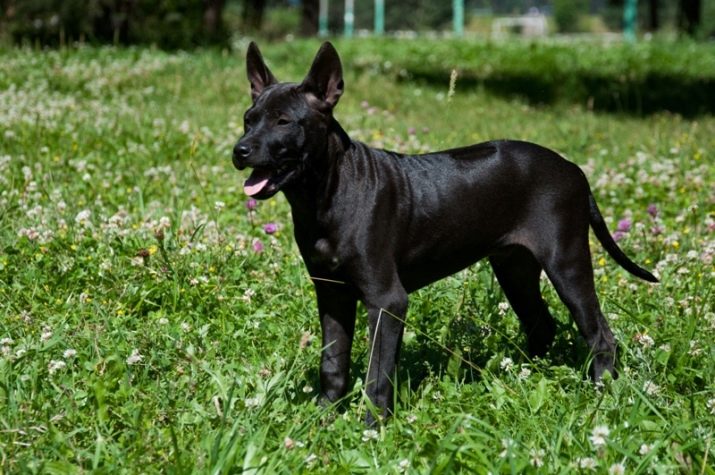
- Blue. This includes a whole range of colors - from pale gray to rich pale blue shades. A distinctive feature of this suit is that in this case the color and the skin itself is grayish.
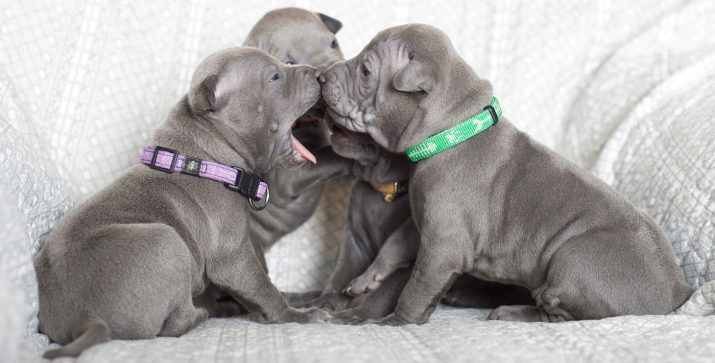
It is believed that individuals with light spots on the chest or abdomen are not suitable for breeding.
- Deer. This color is also sometimes called "isabella". These include delicate iridescent shades of pink and cream. The wool of such individuals has a unique pearl tint.
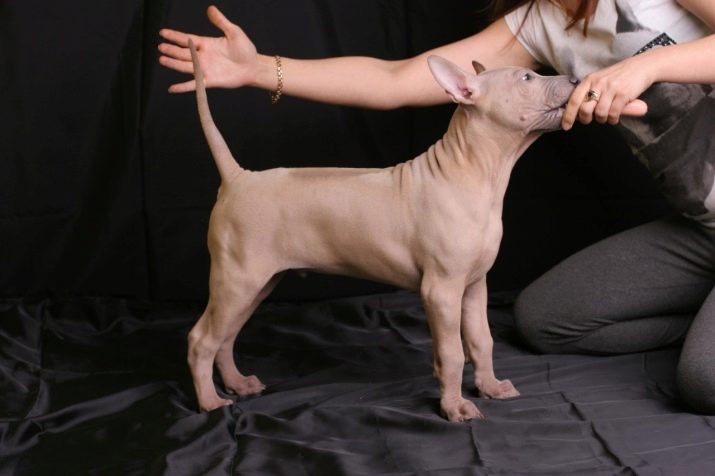
Advantages and disadvantages
Each breed of dog is distinguished by positive and negative qualities. Some of these qualities are manifested in Thais only during adulthood, when the dog's body requires the most attention. It should be understood that most of the negative moments can be safely smoothed out through patient training and proper care.
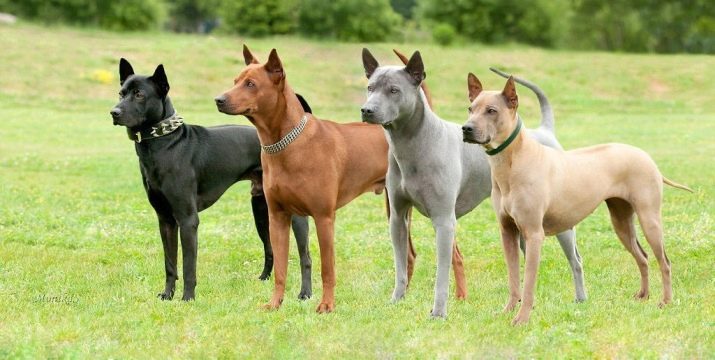
Positive traits.
- Incredible intelligence, ability to make quick decisions. All these qualities make Thais wonderful companions and worthy candidates for exhibitions.
- Easy to train and educate in experienced hands. They tend to build trusting relationships with the owner, which allows them to perform almost all tasks.
- Beautiful, slender and harmonious exterior. These dogs are considered companions of true aesthetes due to their specific appearance.
- Individuals of this breed are clean: they do not like to wallow in the mud, eat spoiled food or excrement from other dogs.
- In addition to the phenomenal activity outside the walls of the apartment, this breed of dog has a unique endurance and adaptability to a wide variety of terrain.
- If the owner manages to win the trust of the Thai, he will always be a mountain for him - he will intercede on the street, rush to save in the water, bring people to the rescue.
- The predisposition to stalking prey makes individuals of this breed wonderful companions in hunting for birds and fur-bearing animals.
- Although these dogs are not suitable for keeping in a street or aviary, they often grow up to be excellent watchmen and will not allow a stranger to cross the boundaries of the apartment. The innate protective qualities make Thais ideal animals for families with children.
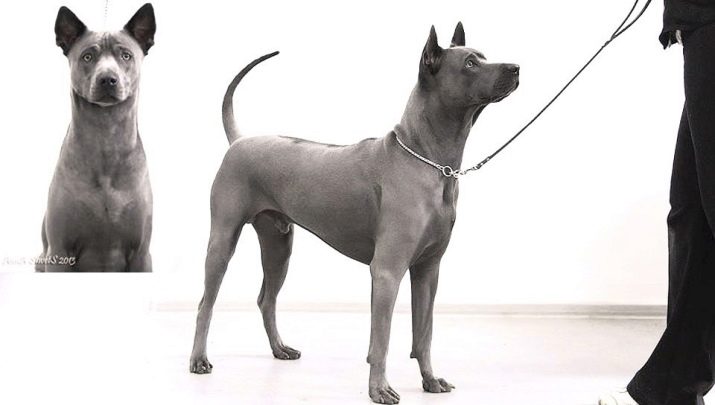
Negative qualities.
- Thai Ridgebacks are extremely capricious - they are skeptical of all the commands and orders of the owner and tend to show their position. These pets need a strict approach to training, only a strong and patient personality can prevail over their difficult character.
- If you want to take a dog on a hunt, you should prepare yourself for attempts to leave you in the footsteps of animals and birds. To avoid this, you need to often take your pet into the forest on a leash and teach it to calmly react to the surrounding nature.
- This is not the best breed option for owners who already have other pets at home. Thais are amazing owners and jealous - they tend to dominate other animals. In addition, if the Thai man notices that you are showing more care and attention to another pet, be sure that he will not be well in the near future.
- Complete intolerance to physical violence and aggression on the part of the owner. If a Thai person feels open aggression on your part, be sure that there will be no question of obedience. Thais are vindictive and aggressive towards their oppressors.
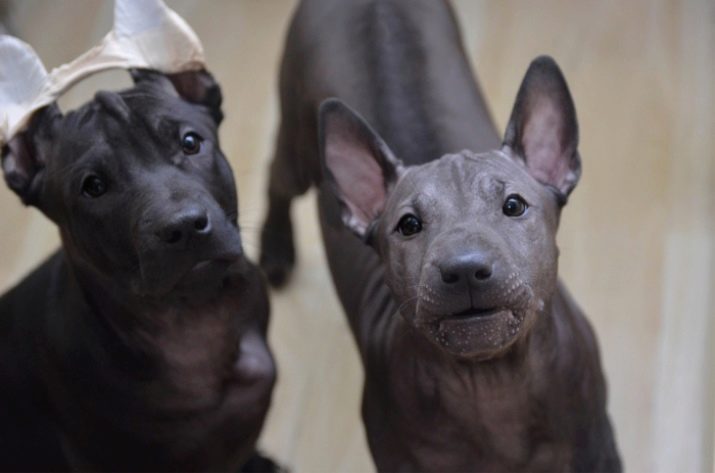
Character traits
Each breed of dog was formed in individual conditions, and therefore they all differ both physically and psychologically. The harsh conditions of the formation of the Thai Ridgeback made these dogs strong, stubborn and self-willed. If in some situations these qualities are exclusively a plus, then in the first training sessions they can cause a lot of problems for the dog's owners. If you do not choose an individual type of training for the Thai, consider that the dog will grow up to be capricious, disobedient and aggressive.
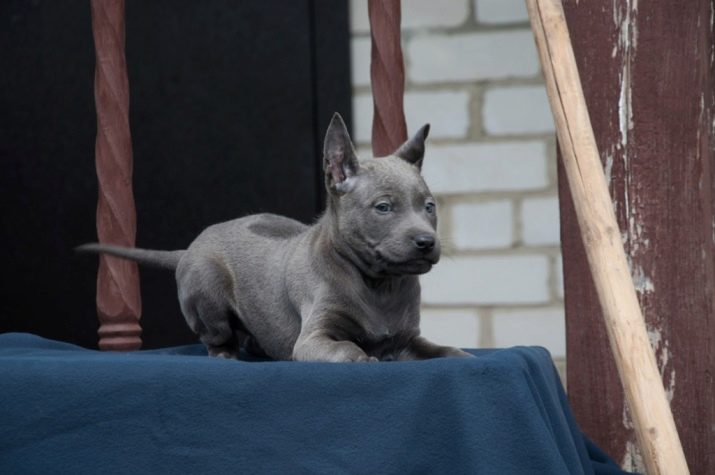
Only the most patient and experienced owners who have already had experience in raising large dogs can cope with such a character of Ridgebacks.
Thais are born favorites. In the family circle of their owners, they are incredibly obsessive, good-natured and kind. They are ready to follow the owner everywhere, support any of his ideas and even the smallest hints of games. Thais are extremely sensitive to aggression. If we are talking about a newly purchased individual, any manifestation of aggression towards such a dog will be a real red rag for her. That is why Thais are not recommended to buy and train in adulthood - the chance of establishing a relationship of mutual respect between the dog and the owner is too small.

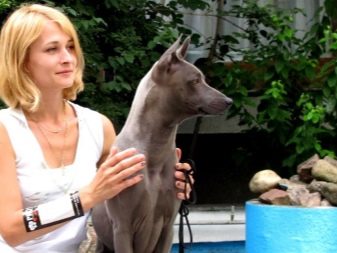
Thais differ from other dogs in their ability to quickly and deeply analyze the situation. If these pets are in human society from birth, very soon they will learn to literally read them. The main feature of Thai training is that the main message must be expressed not only through commands, but also through intonation and facial expressions. These dogs are excellent at recognizing emotions and gestures. It is especially interesting to watch these dogs when they hear their nickname: the Thai instantly reacts to his name, expressing interest through the knitted eyebrows and folds on the forehead.
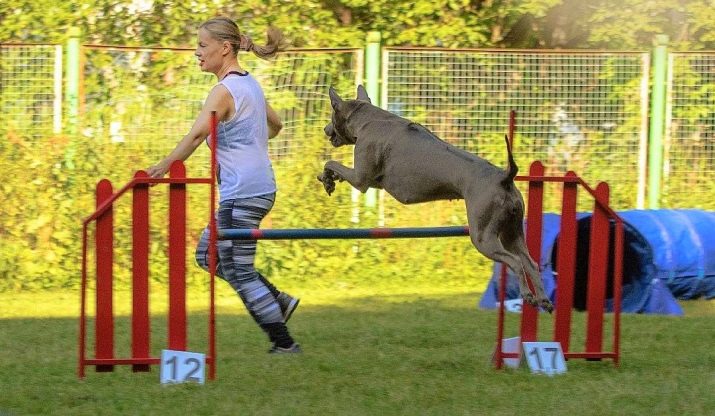
Ridgebacks in a few minutes can fully analyze a stranger and give their assessment of his actions. If the dog sees that the owner treats the stranger with warmth, then the dog will take at least a neutral position, but it is unlikely to allow itself to be stroked. If we are talking about guests who come to the apartment more than once, then individuals of the Thai Ridgeback will behave with them freely and openly and will even hope for games and entertainment. For other people, Thais will always remain gloomy, serious and suspicious "grumblers". The trust of these dogs must be earned, and sometimes it is not so easy for an inexperienced person.
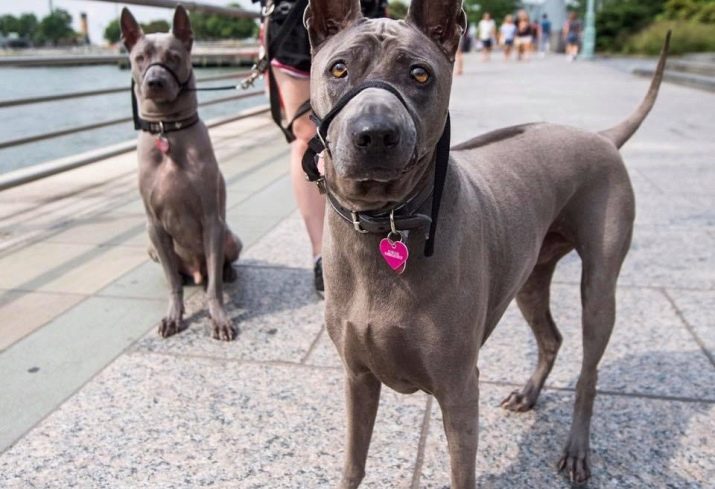
If the situation, according to the pet, is out of control and the owner needs help, the dog will first emit a warning roar or bark, and only then can rush with fangs at the offender. Fortunately, not everyone will dare to disdain the external strength and power of the Thai and attack the owners of these dogs.
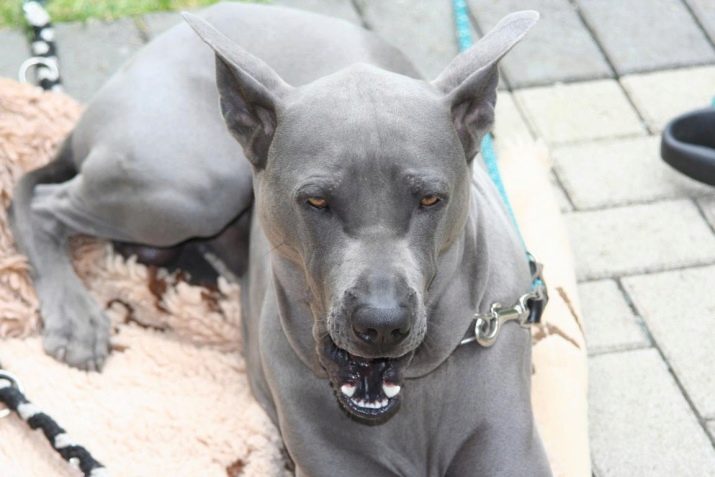
All this makes the Ridgeback a wonderful watchman in the walls of the premises and a born guard on the street.
Ridgebacks are too active and restless to want one thing for a long time. At some moment they will let you know that they need games or a walk, and at another they will calmly settle down on their lounger and fall asleep. Despite this behavior, Thai Ridgebacks very quickly adapt to the regime of their owner (they will patiently wait for you from work before going to the simulated tray). They feel good inside the walls of the apartment, but from a long stay away from the street they can become aggressive.

If a Thai puppy grows up at the same time as a kitten or a dog of another breed, then there should be no problems with friendship. A dancer will also tenderly protect another pet, as a full-fledged member of his family. If we are talking about buying a puppy or an adult Thai in an apartment with another adult animal, then conflicts will be indispensable. Thais are very jealous and will terrorize another animal behind your back. Ridgebacks are irreconcilable with street animals - they perceive them as entertainment and objects for fun and games.
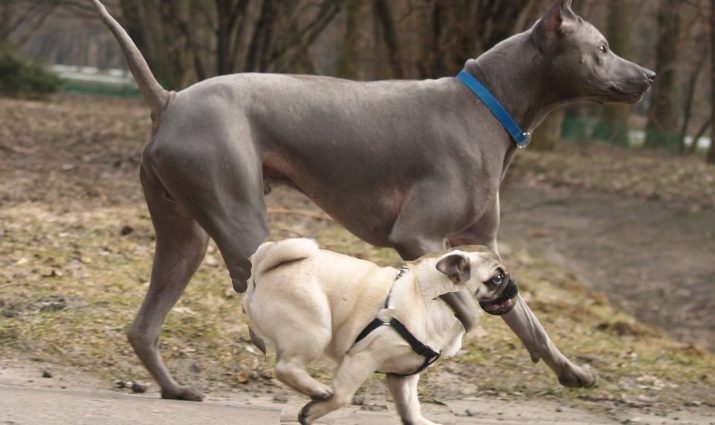
In relation to other dogs, Thai Ridgebacks always try to be leaders, however, they remain completely neutral, up to the manifestation of disrespect or aggression on their part.
Thais are incredibly kind-hearted towards little family members. They are ready to completely devote themselves to playing with children, they absolutely do not react to harassment and careless misconduct of kids. The Thai Ridgeback feels a kindred spirit in the child, ready for adventure and fun all day long. However, too frequent fun with children will be harmful to the upbringing of Thais - children are too soft and restless and will give the pet a bad example. If possible, set aside separate time for nurturing dance and socializing with children. If we are talking about the appearance of children in a family with an adult Thai, neither the safety of the kids, nor the obedience of the dog, do not worry.
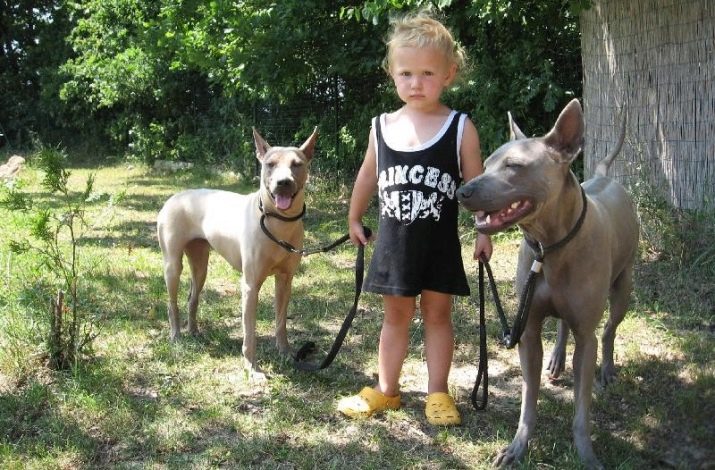
For Thais, walking and training is not only a way to tidy up the body, but also a method of splashing out a huge amount of inexhaustible energy. They just love to spend time outdoors near the water or at picnics. All the energy of these dogs should go exactly to the street (for this you will need horizontal bars, sticks and frisbees, tracks for running and jumping).
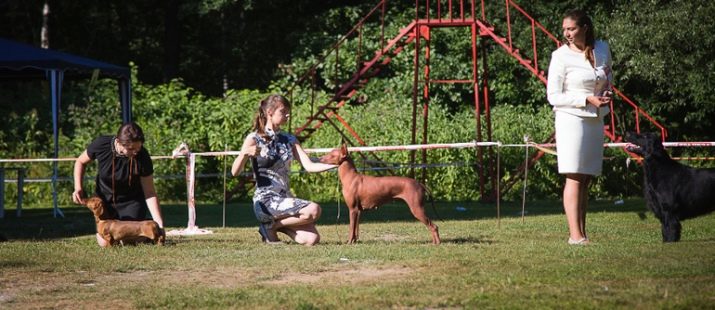
As already mentioned, the Thais have incredibly strong hunting abilities, this allows them to track down even the smallest prey. On a street full of birds, cats and insects, walking with these dogs can be very difficult. Carried away by the chase, the Ridgeback may not even notice that he has fallen behind the owner, and get lost.
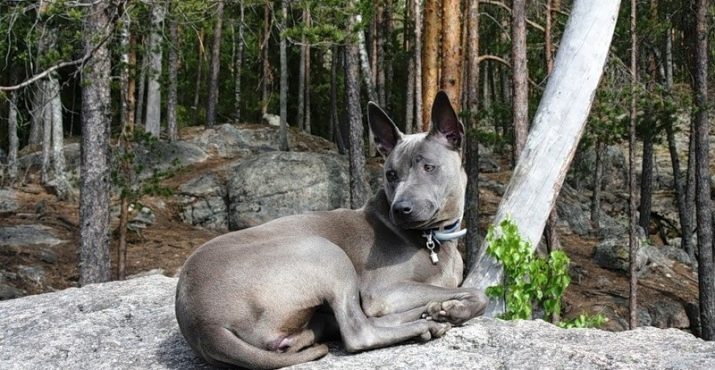
That is why it is advised not to let these pets off the leash at all until the age of one year.
How to name?
When choosing nicknames for Thais, the owners are not limited to some stereotypes. These can be both ordinary names (Beam, Jack, Tiffany, Bella), and completely unusual nicknames that have no direct relation to the breed.
Most often, owners turn to 2 factors when choosing a name for a Thai Ridgeback:
- highlighting pedigree, power and strength - Zeus, Count, Buran, Lord, Caesar, Apollo, Athena, Tempest, Lightning, Lady;
- associations with color - Angus, Onyx, Panther, Marble, Zephyr, Brownie, Zlata, Scarlet, Almaz, Smoke.
In addition to these factors, you can refer to other principles when choosing a name: associations with flowers, wild animals, natural phenomena, cosmic bodies, historical figures, character traits.
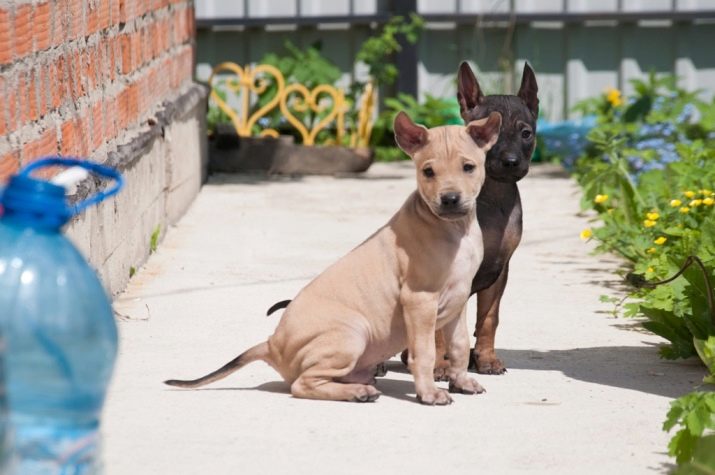
Whichever name you choose, it should be sonorous, short and memorable for the dog.
Content rules
This breed of dog has an exceptionally short coat that sheds only once a year. In addition, the lack of undercoat has meant that these dogs do not have the characteristic canine scent.All of this made Thais excellent candidates for home keeping. In addition, the intensity of shedding depends on the type of coat, for example, individuals with a velor coat shed much less than individuals with a standard one.
To get rid of all the problems with the hair of the Thai Ridgeback, it is enough to carry out regular brushing at least once a week. If the shedding period has passed, and your dog does not stop shedding profusely, you need to contact your veterinarian. Perhaps this is the influence of a subcutaneous tick.
To care for your coat, you will need the following tools: a comb with soft and dense teeth or a round comb, soft brush. These tools will not only remove all dirt from the coat, but also give your pet a pleasant wellness massage. As you might have guessed, these dogs do not need a grooming procedure, however, with individuals of a standard type of wool, you can make rare trips to grooming salons.
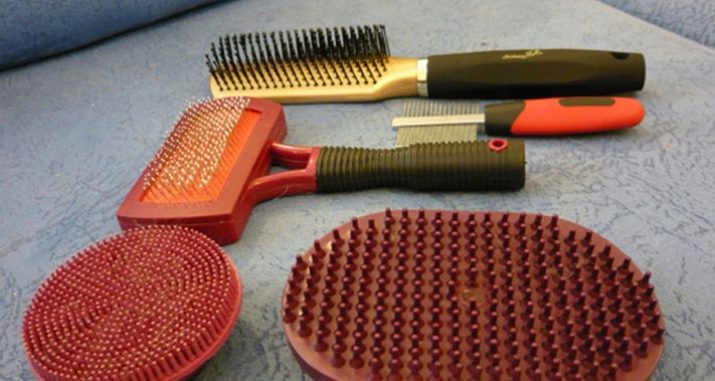
Due to the almost complete absence of undercoat, these dogs can only be kept indoors without drafts. In addition, the place should have direct access to all other parts of the apartment - the pet should constantly see its owners and what they are doing.
The ideal option would be a warm place or a sun lounger in the corridor (or hallway) of an apartment or private house.
For walking these dogs in autumn and winter, blankets or warm clothes for dogs will definitely come in handy, without them they will instantly develop a cold or pneumonia. In addition, during such seasons, it is recommended to saturate the dog's diet with vitamins, as well as to take care of regular vaccinations (especially if the dog spends a lot of time outside with other dogs).
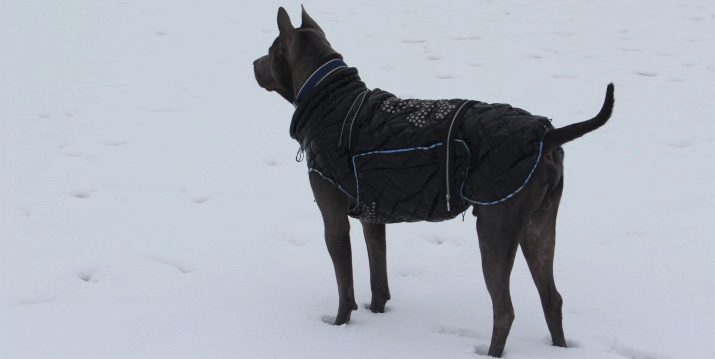
Try to avoid walking in rainy or wet weather. These dogs do not tolerate moisture in any form and will try to bypass all the puddles in their path. In order to remove dirt from the paws and genitals, it is enough to rinse them with ordinary running water. The bathing procedure with the help of shampoo (specifically for dogs with a gentle soft formula) and detergents should be carried out no more than 1 time in 2-3 months, if necessary. In addition, if your pet loves outdoor activities, this does not mean that he loves to swim in water bodies - you should not force a Thai to throw himself into the water or teach how to rescue a drowning man. Excessive water treatments will lead to problems with the skin and psyche of the animal.
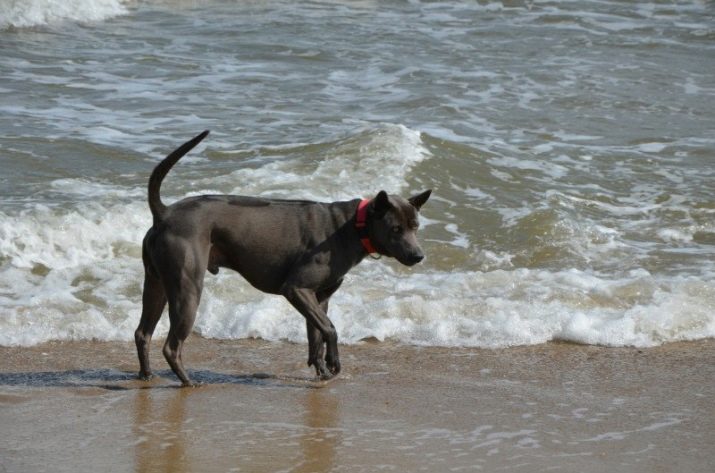
One of the most vulnerable areas on the body of this breed are the auricles. Being constantly open and unfolded, they become just a wonderful breeding ground for bacteria. Ear cleaning should be done at least 2 times a week using cotton pads or using specialized ear cleaning products. The condition of the ears can be traced both visually and by smell.

The eyes are another rather vulnerable spot in the exterior of every Thai. Every morning, ocular mucus forms in the corners of the eyelids of these dogs, which hardens over time. This mucus should, if possible, be removed every morning with a cotton pad. If the mucus is not promptly wiped off, dry lumps form in the corners of the animal's eyelids, which lead to irritation of the skin around the eyes and the appearance of "lacrimal pathways".
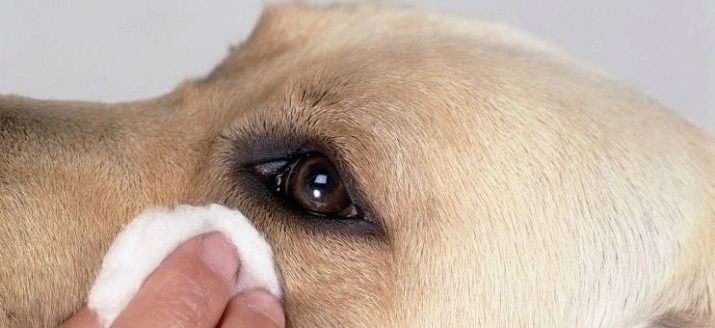
For prevention, it is recommended to wash the eyes with a decoction of chamomile at least once a week.
To care for the oral cavity of Thais, it is unacceptable to use human pastes; for this, special dog products must be bought. Cleaning should be done at least 2-3 times a week to avoid the formation of tartar or plaque. In order to avoid these unpleasant moments, you can rinse your pet's teeth with special herbal decoctions against tartar.
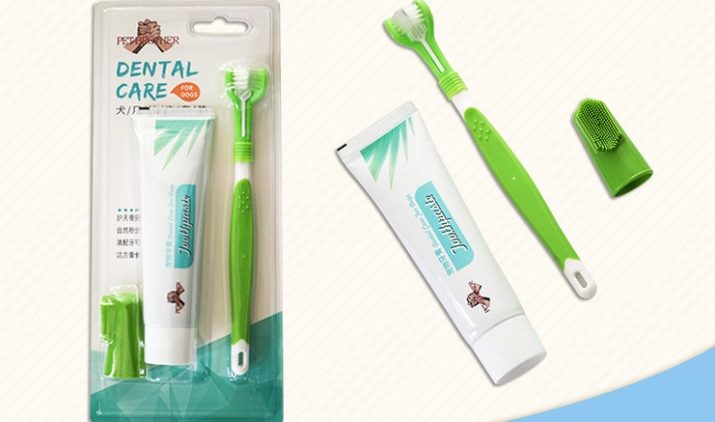
Before buying a Thai Ridgeback, it is worth getting a good nail clipper for large dogs. Already at the age of six months, pets can grow very long claws, which, without grinding on walks and training, can interfere with the pet's life and even harm its health. The claws should be shortened at least once a month to prevent deformation and abnormal growth of the claws. When clipping white nails, cut just below the pink line, and for dark nails, cut at the point where it is rounded.

Do not forget about caring for the paws of the animal - from frequent and long walks and training on the pads, cracks and wounds can form. So that they do not bring discomfort to the animal, you should treat them with an antiseptic and any fatty cream (you can use creams like "Children's").
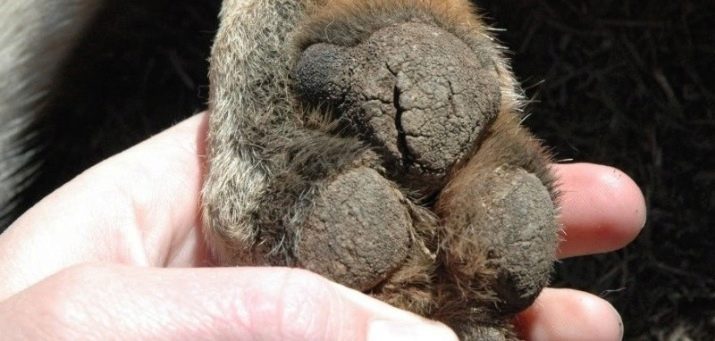
One of the most important articles of caring for any pet is its proper and balanced nutrition. When determining the optimal type of diet, there is a choice between ready-made and natural feed. Each type of food has its own pros and cons.
Ready feed
Pros.
- You can store large quantities of feed for a long time without worrying about spoiling it.
- There is no need to add additional vitamins and additives to ready-made feeds, even in the winter season. In high-quality feed, they must be contained a priori.
- No need for power balancing. In ready-made feed, the doses of protein, carbohydrates and fats are already balanced.

Minuses.
- It is not easy to add something new to such a diet. Some kind of fruit or treat can harm the dog's body, which is adapted only to ready-made food.
- Good prepared food, especially in large quantities, will hit your wallet hard.
- The finished food needs special conditions of keeping, otherwise it will become moldy and harm the health of the pet.

Natural feed
Pros.
- If you are preparing a product yourself, you are completely confident in its composition and quality.
- Relatively low cost.
- Puppies of all breeds of dogs relate better to natural food in the diet - they trust her more and get used to it very quickly.
- You can safely add a new product to such food, while the diet will hardly change. Diversity in nutrition is an extremely important point that must be observed in the feeding of any pet.
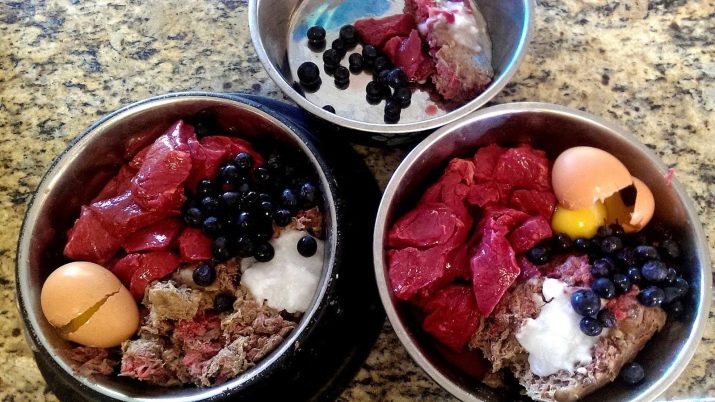
Minuses.
- The shelf life is too short. These products have the greatest nutritional value only in the first 2-3 days after cooking.
- All care about the quality of food, as well as the balance of trace elements in its composition will be on your shoulders. Not every breeder is able to control this.
- Insufficient amount of vitamins in the composition of such food, which means that you will have to add vitamins and nutrients separately to the diet.

If everything is clear with ready-made feeds (premium or super-premium class), then natural food has its own requirements. Try to include boiled meat in the pet's diet (with a low proportion of fat - veal, beef, turkey, chicken breast, hare), offal or boiled sea fish, cereals (buckwheat, rice, corn, oatmeal in water), vegetables (like boiled and fresh), dairy products (kefir, cottage cheese, cheese).

Try to have your meals at about the same time every day.
Depending on age, the frequency of feeding varies: from 4 to 5 times a day up to six months of age with a gradual reduction of feedings to 2 times a day at the age of 10 months. That is, you will have to reduce the frequency of feeding by one meal approximately once every 2-3 months.
When feeding with ready-made feed, the required portion sizes are indicated on the product packaging and are calculated depending on the weight, height and age of the individual. If we are talking about natural nutrition, then here the portions are calculated intuitively for the first time - try to keep track of whether the pet leaves food in a bowl after a meal or, conversely, requires additives. As a rule, Ridgebacks control the amount of food eaten on their own.

In winter and autumn, supplemental vitamins should be added to the dog's diet. All because of the thin coat of this breed - they have too great a chance of getting sick, and therefore the body needs protection.

Make sure your pet always has a bowl of clean, fresh water in the access area. In order for the pet not to roll it, it is better to screw the bowl to the stand or choose heavy metal models.

It will be better to give just bottled water, but filtered from the tap is also suitable.
If you decide to change the animal's diet, you should not suddenly introduce new foods. Do this gradually. Before introducing a new product into the diet, make sure that the pet is not allergic to it or common intolerances.
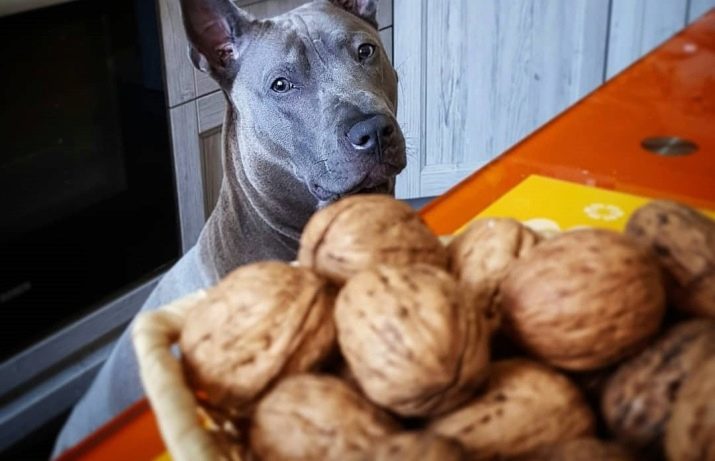
You should never give your pet food before walking. - then he will become lazy and want to rest a little, and all activity will come to naught. It is better to feed the Thai after a long and eventful walk. In the morning it is better to give light food like cereals and vegetables (which do not weigh down the stomach and give the necessary strength for the day), and at night meat, fish or offal - they are better absorbed by the body during the dog's sleep.
The following foods should be avoided when feeding a Thai: river fish, artificial spices and additives, foods high in sugar, legumes, pitted fruits and berries, raw meat, raw eggs, tubular bones (harmful to the animal's teeth and difficult to digest), pork (too much fat), mushrooms.
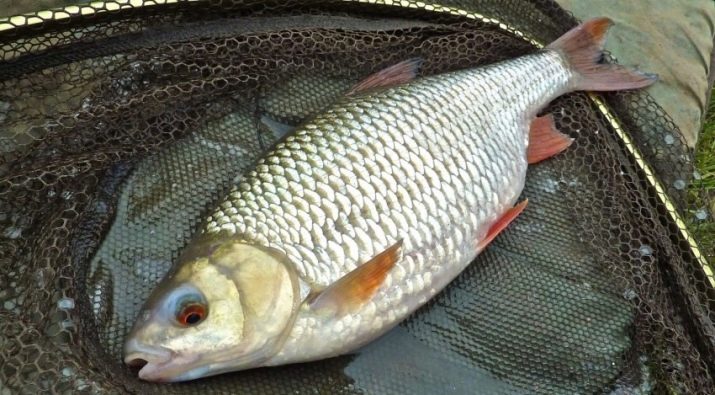
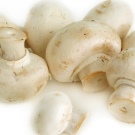
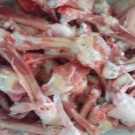

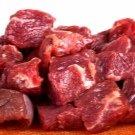
Education and training
Thai Ridgeback training will not be easy for everyone. They are extremely stubborn and wayward dogs that need an individual approach.
The very first thing that is required of you is to establish your authority in the eyes of the pet. You must make it clear to the dog who is the owner of the house and who should obey whom. To achieve these goals, you should strictly outline all the free and closed space for visiting and, at the slightest violation of the boundaries, immediately send the pet out.
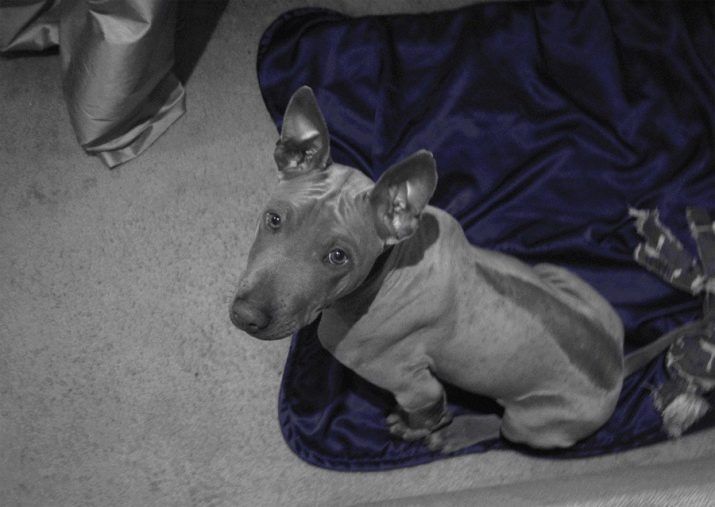
Thais are extremely stubborn and stubborn, it will take a long time for them to understand why their person is forbidden to go somewhere or do something. Therefore, the main thing here is patience.
Trainings and trainings begin as early as 1.5 months of the puppy - it is at this age that dogs begin to understand what is required of them, and also have genuine respect for their owner. Since the kennels only sell Thais over 3 months old, start training as soon as the puppy arrives at your home.
Young Thai Ridgebacks, especially in large families with children, use every attempt to put themselves above the rest. It can be constant pranks, throwing toys and things, endless molestation to other pets, fake aggression towards family members. You cannot get rid of it in one day - all this is eradicated through long and patient training and repetition of what is allowed and what is not.
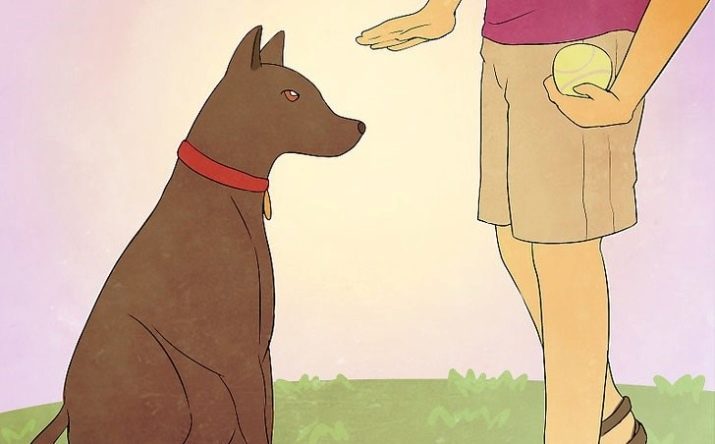
Your main quality in raising a young Thai is patience. Never hit or shout at the pet - this will not lead to anything good, but will only make the puppy angry and capricious. It's also not worth "clattering" with a pet, you must develop your own adamant style, where affection and encouragement are given only for obedience. There should be no indulgences.

Despite their independent nature, Thai puppies feel extremely uncomfortable in the company of strangers, and therefore they should be taken for walks as often as possible. There, the pet will get to know other people and pets and understand how to behave.
To establish a dominant position over a pet, you should use the following tools:
- always enter the door first, only then let the dog inside the room or room;
- eat food before your pet eats it, and at the same time stop any attempts of begging from the table;
- designate a resting place in the apartment where the pet can only be in your presence (usually a bed, sofa or chair);
- when walking on the street, teach your pet to follow next to you and not go too far - in the future this will come in handy if you want to walk without a leash or collar.
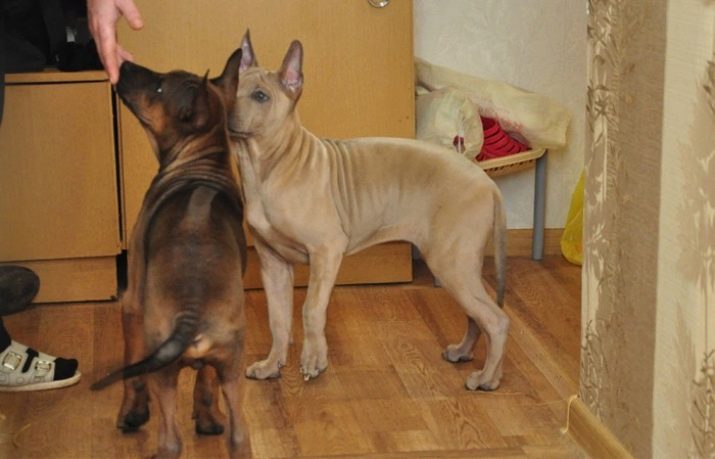
If you have already acquired an adult Thai and cannot cope with his complex character and manifestations of aggression and disobedience, send him to an experienced dog handler for education.
Ill-mannered Thais are often the culprits in accidents with children and adults. Before the pet reaches the age of one year, you should achieve a stable character from him without showing leadership over the owner.
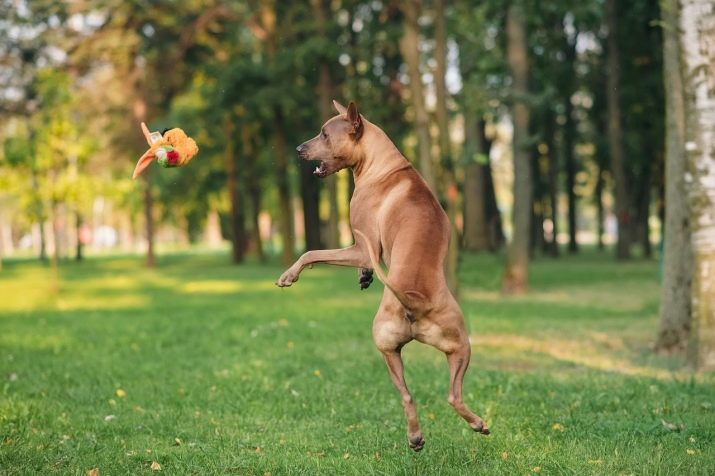
Owner reviews
According to the owners, the Thai Ridgeback is an incredibly smart, but wayward dog breed. The owners note that in the domestic circle these pets are unusually affectionate, adore children and protect them from other animals. These dogs are extremely wary of strangers - they cannot be bribed with some kind of sweetness or appeased by stroking.
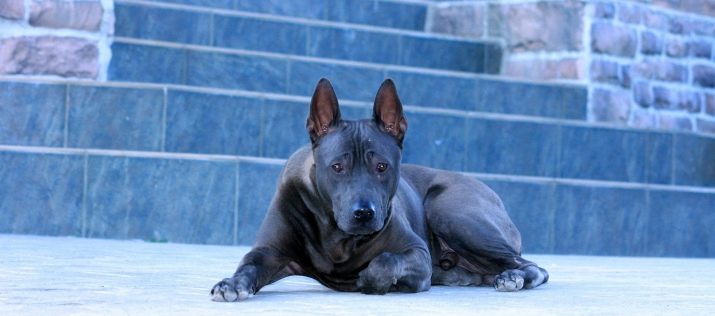
In host families, all Thais, without exception, establish a dominant position among other animals, and also compete with other family members for the attention of the owner.
For approval and attention, these dogs are able to perform a variety of tricks and take funny poses.
Among the negative aspects, almost all owners highlight the difficulty of training both young and adult individuals. All breeders strongly recommend starting training dogs at 1.5-2 months and not making any indulgences. If you once allow him to climb or go somewhere, in the future it will be impossible to expel him from there, since the behavior of an adult dog cannot be corrected.

For more information on the Thai Ridgeback breed, see the video below.






































